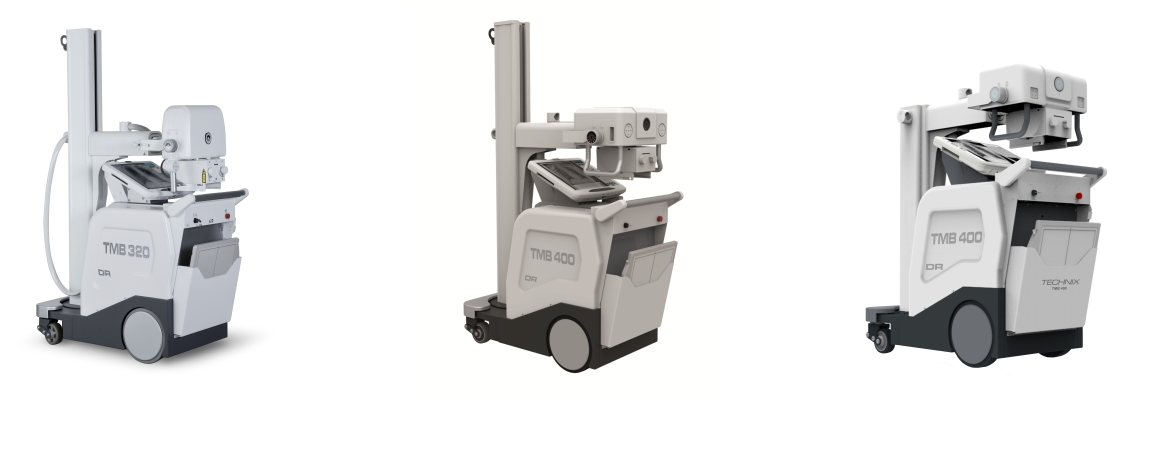
TMB is a motorized X-ray mobile unit designed to meet a wide range of clinical applications.
The systems are differentiated by the power of the generator and for the X-ray unit: TMB 320 - 32 kW and monoblock; TMB 400 - 40 kW and sheath.
The compact dimensions and the integrated motor make the unit move smoothly and precisely. Thanks to the telescopic arm and the rotating column, TMB is able to move easily even in rooms with multiple beds and small.
A device dedicated to the movement of the system is also placed on the monoblock to improve the position of the patient-bed radiogenic source through motorized millimetric movements.
The unit is moved at the most convenient speed for the user, easily overcomes obstacles and steps and can be stopped simply by releasing the handle (dead-man brake).
Moving freely throughout the hospital will be even easier thanks to the collapsible column version of TMB 400 that allows you to have a complete view of the surrounding environment so as to overcome obstacles without difficulty, especially in critical areas that have many equipment such as the intensive care.
The long-life battery allows you to use the equipment both for handling and for the emission of rays without needing to be recharged, if not at the end of the day.
Both systems are available in two versions: TMB 320 / TMB 400 for use with standard cassettes and CR cassettes and TMB 320 DR / TMB 400 DR for digital image acquisition in handwriting mode, with a solid state detector, commonly called Flat panel detector (FPD). The acquired images are saved in the system's mass memory, displayed on a high resolution monitor and eventually sent to a diagnostic work station or to a general archive via the DICOM network.
The system provides for the customization of the acquisition, process and image display parameters according to both the anatomical part selected and the patient's size.
This allows the correct and immediate acquisition and visualization of the image, avoiding subsequent improvement operations. Sophisticated post-processing functions are also available that allow the operator to process images according to the diagnostic test.
The unit is intended to be used mainly for the execution of radiological examinations and diagnostic investigations of:
- Intensive care
- hospitalization
- Emergency room
- Orthopedics
- Plaster room
- Pediatrics
- Neonatology
- Sports Medicine
- Operating room
